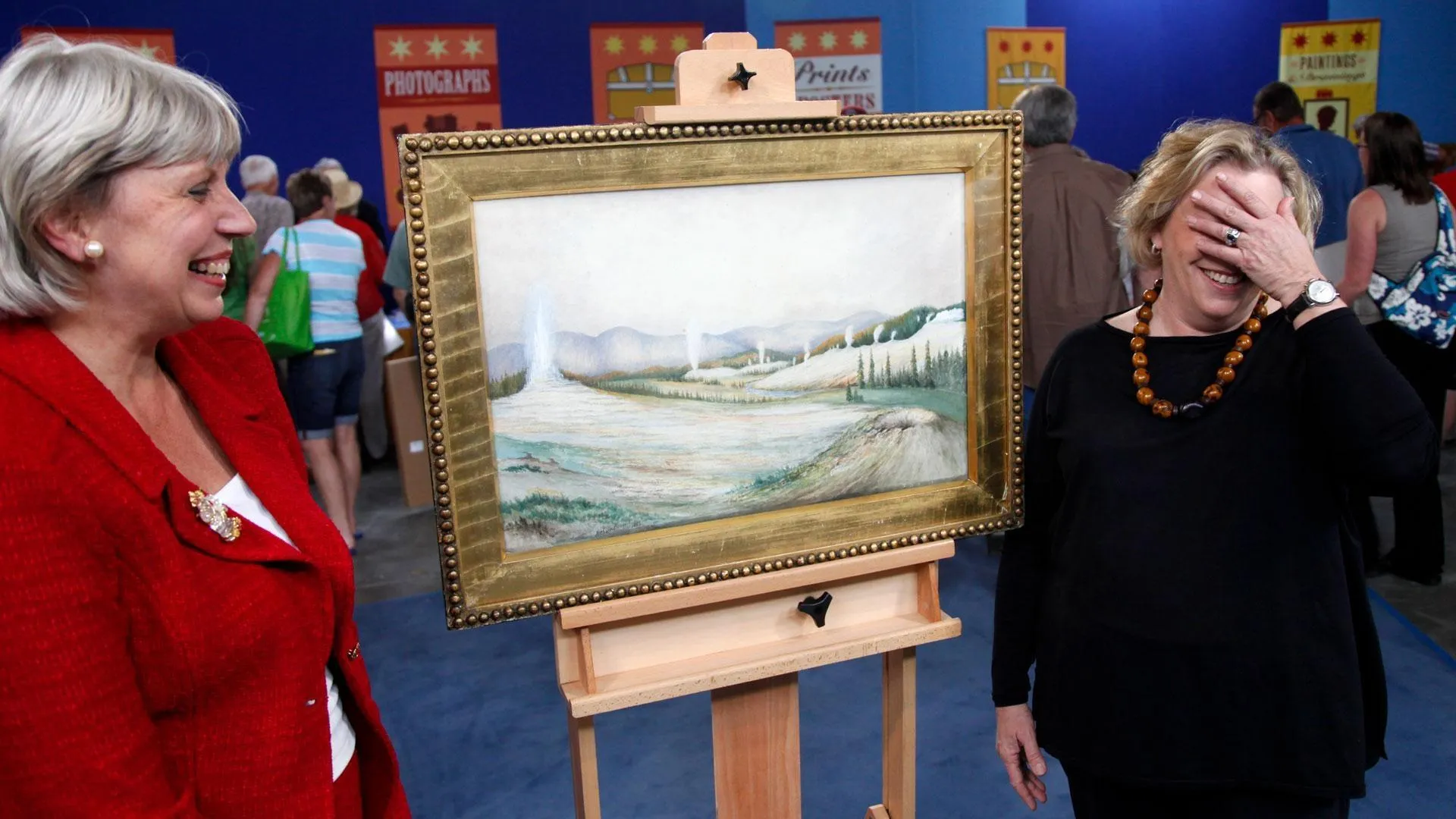GUEST: My grandmother collected Asian art, and she especially loved jade. And this is a piece from her collection. I've had it in my possession for maybe five to six years. She told me that she understood that when she purchased it that it was given to General MacArthur from Chiang Kai-shek.
APPRAISER: Ah.
GUEST: Now, I don't have any documentation.
APPRAISER: Okay.
GUEST: But that kind of told me that maybe it was a special piece of jade.
APPRAISER: Right. I suppose it's a possibility, but without a letter or something like that, we don't know for sure. But in this case, it's a very beautiful object and it doesn't really matter that much. Provenance is always important, but the object stands on its own. And what it is, functionally, is a Chinese brush washer.
GUEST: Really?
APPRAISER: And the water would sit inside that lotus leaf, and you could rinse out your brush. Chinese scholars like to have all their tools be little art objects, so the brush washer is an art object, the brush pot is an art object, the brushes, the brush stand. And this is a rather large one, which is nice. What is also nice about it is that it is what we call celadon nephrite jade. This piece was probably produced in mid to late 19th century. You also have a really nice stand here. And it continues the motif of lotus pods and lotus blossoms. The lotus blossom is a symbol of purity, because a lotus grows out of the mud in the pond up along the stem, and then the blossom blooms pure white.
GUEST: Oh, I see.
APPRAISER: And so that's a Buddhist concept of purity and cleanliness. The function of the stand is to sort of lift the object up and give it an airiness and a lightness that it doesn't have if it's plunked right straight down on a tabletop. The type of wood is a very dark Chinese wood called zitan wood, which is highly prized. It's very dense and heavy. What makes this piece very interesting is that someone has added a date to the Qianlong dynasty. And that is 1736 to 1795. So they've added a date to make it look a little older than it is. Normally that would be a problem-- makes it seem like it's sort of a copy.
GUEST: Yeah.
APPRAISER: But in the current market, this added date makes it a little bit more interesting.
GUEST: How can you tell it's 19th century?
APPRAISER: A lot of times it's the quality of the carving and how crisp the detail is around the edge here.
GUEST: I see.
APPRAISER: And a Qianlong piece would be much tighter and much crisper.
GUEST: Okay.
APPRAISER: I would say this piece would bring about $5,000 to $7,000 at auction.
GUEST: Really? Great.
APPRAISER: If it was really 18th century, it would bring probably $30,000 to $40,000.
GUEST: Wow.











